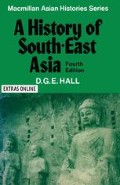Abstract
At the end of the Middle Ages the Portuguese were well fitted for the leadership of a European effort to exploit the trade of the Indian Ocean. Their position on the Atlantic made them a race of mariners able to cope with the risks of the sea. In their long crusade against the Moors they had built up a formidable naval power. They employed skilled Genoese seamen. They were ahead of other powers in the construction of ‘great ships’ able to accommodate large numbers of men for long ocean voyages. Their chief ports, Lisbon and Oporto, had trading connections with both the Mediterranean and northern Europe. When, under the leadership of Vasco da Gama, they made their first appearance in the Indian Ocean they had behind them the experience of a long series of explorations and the urge of a fervent nationalism, which impelled them to destroy Islam.
Preview
Unable to display preview. Download preview PDF.
Author information
Authors and Affiliations
Copyright information
© 1981 D. G. E. Hall
About this chapter
Cite this chapter
Hall, D.G.E. (1981). The Portuguese and Spaniards in South-East Asia. In: A History of South-East Asia. Macmillan Asian Histories Series. Palgrave, London. https://doi.org/10.1007/978-1-349-16521-6_14
Download citation
DOI: https://doi.org/10.1007/978-1-349-16521-6_14
Publisher Name: Palgrave, London
Print ISBN: 978-0-333-24164-6
Online ISBN: 978-1-349-16521-6
eBook Packages: Palgrave History CollectionHistory (R0)

